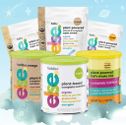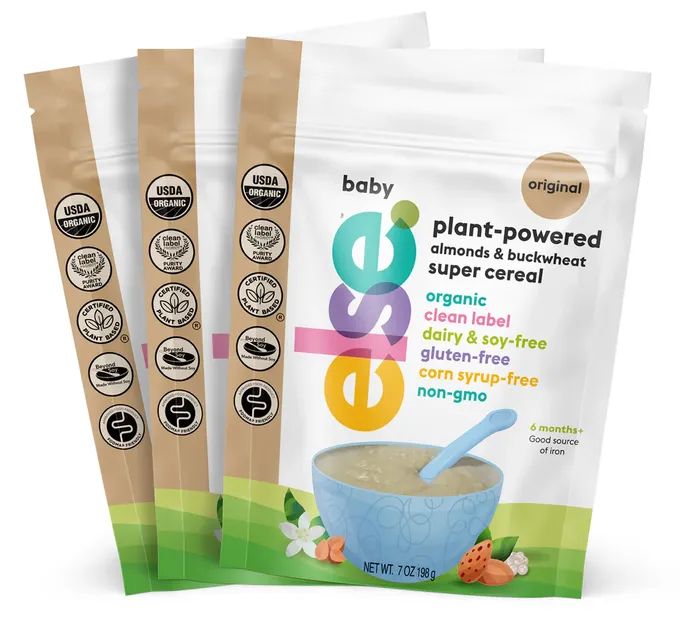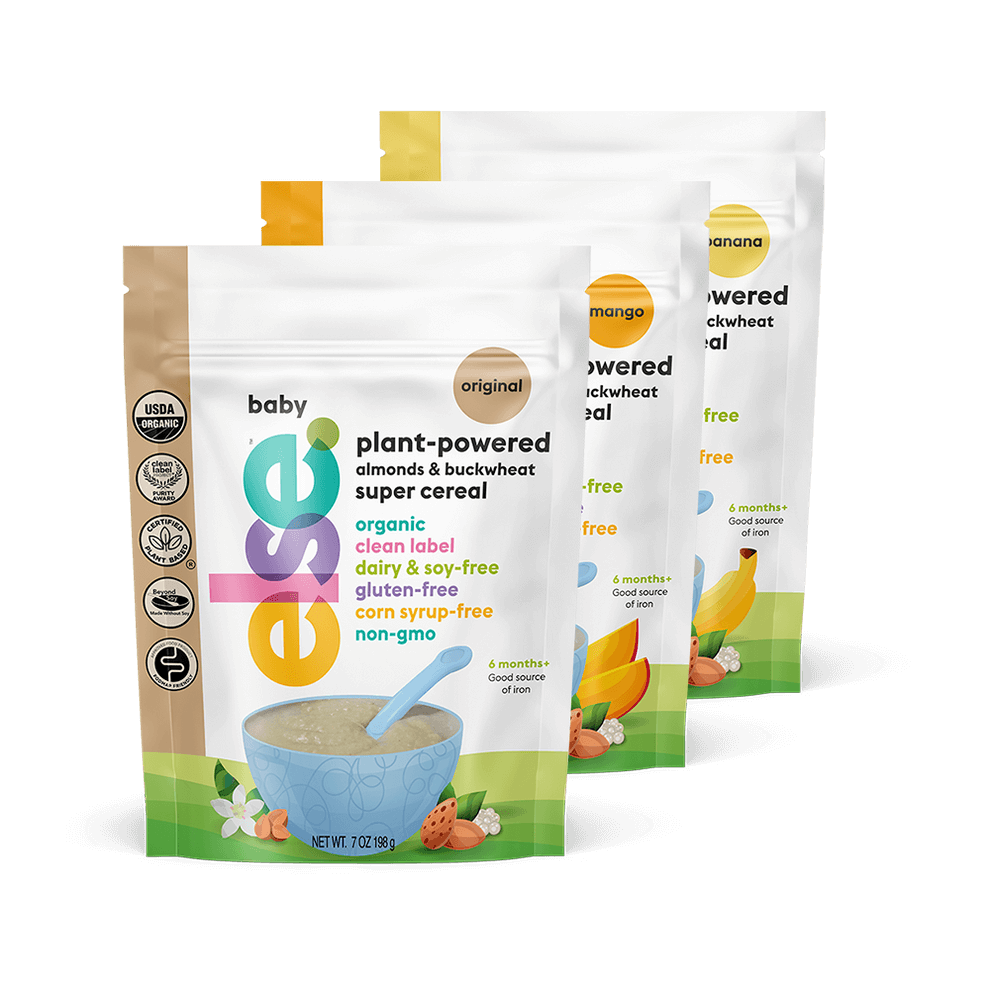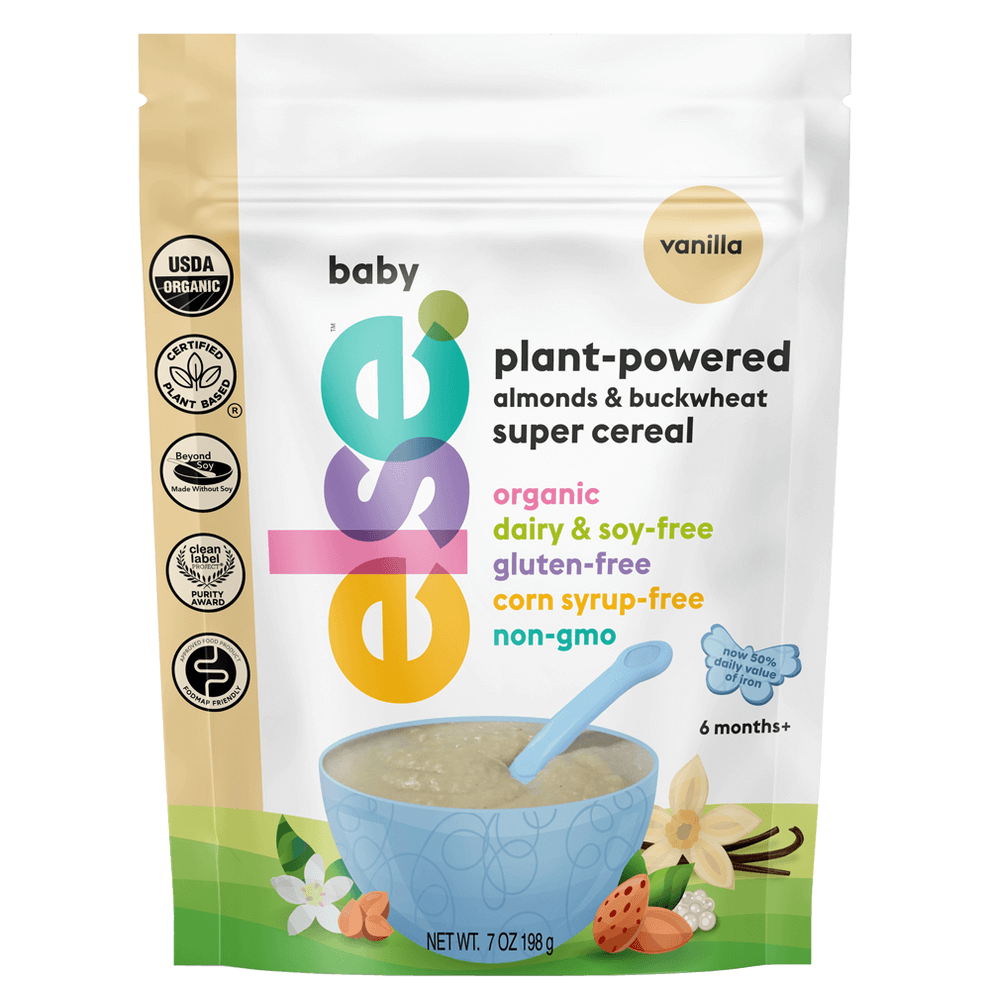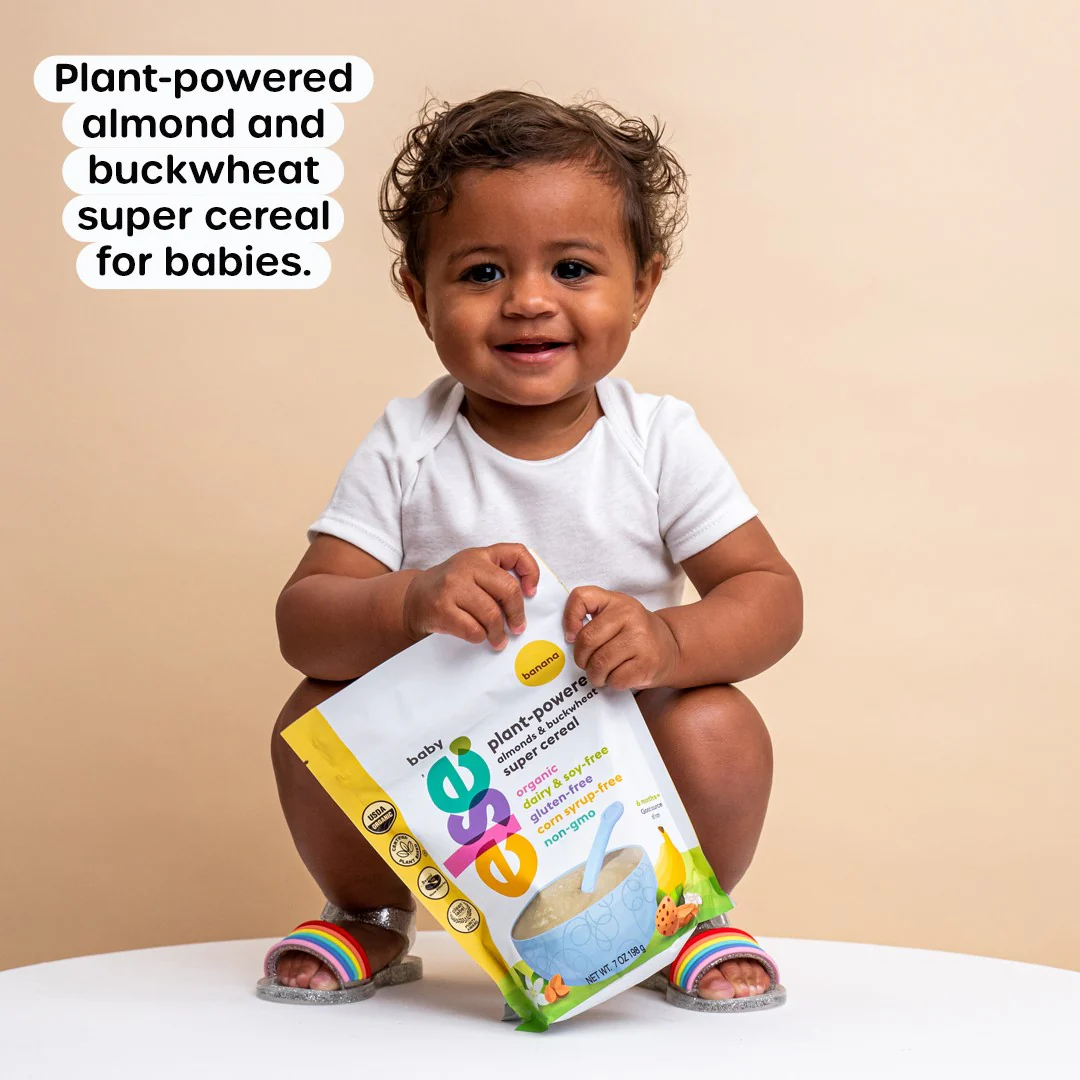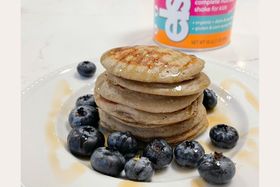When Can Babies Eat Cereal? A Guide to Introducing Solid Foods
Updated May 23, 2024
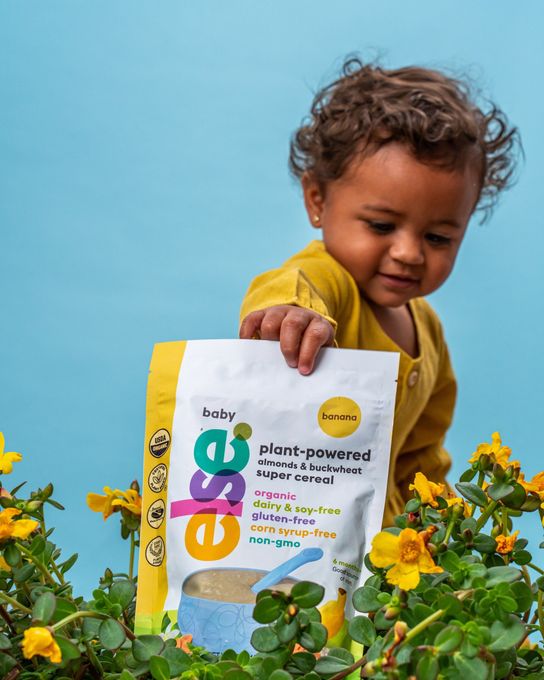
When can babies have cereal? This common question for parents and caregivers marks a significant milestone in a baby’s growth. The short answer: around the 6-month stage when infants show signs of readiness for solid foods. This article provides detailed steps for introducing cereal to your baby’s diet, key indicators of their readiness, and how to prepare that first spoonful, ensuring a nutritious start.
Key Takeaways
The American Academy of Pediatrics recommends introducing iron-fortified infant cereal around 6 months of age, when babies typically show signs of readiness for solids, such as good head control, the ability to sit with support, and interest in food.
When preparing a baby’s first cereal meal, it should start with a thin, soup-like consistency using breast milk or formula, gradually thickening over time to promote the development of chewing and swallowing skills.
Iron-fortified infant cereals provide essential nutrients like iron, zinc, calcium, and vitamins, which are vital for a baby’s growth and development; diversifying grains beyond rice cereal is recommended to minimize arsenic exposure risks.
Determining the Right Time for Cereal Introduction
Transitioning from milk to solids marks a significant milestone in your baby’s life. The American Academy of Pediatrics, along with other health experts, suggests the introduction of infant cereal into a baby’s diet around the age of 6 months. Starting solid foods, including cereal, before 4 months old is not generally recommended as it could result in health complications.
Bear in mind that each baby is unique, and the readiness to start consuming solids may vary slightly with age. Typically, babies show readiness to start consuming solid foods between the ages of 4 to 6 months. The key is to watch for developmental signs that your baby is ready for solids. This includes good head control, the ability to sit up with support, and an interest in food.
The Ideal Start: Age Recommendations for Baby Cereal
Once you’ve confirmed your little one’s readiness to venture into the realm of solid foods, But what should be their first food? Ideal first foods include iron-fortified baby cereals, such as single-grain rice, oatmeal, or barley. Why iron-fortified? Most babies are ready for iron fortified baby cereal around 6 months old. This coincides with the time when a baby’s natural iron stores start to deplete.
Such cereals are not only simple but also easy to digest. They contain no added salt or sugar, ensuring your baby’s first food is free of unnecessary additives. Introducing the right types of cereal early on may increase infants’ acceptance of various fruits and vegetables and reduce the likelihood of food allergies later in life.
Developmental Readiness Signs for Solid Foods
Independent of age, observing your baby for signs of readiness to consume solid foods is vital. These signs go beyond age and are more about their physical and developmental readiness. Key signs include good head and neck control and the ability to sit up with support, such as in a high chair.
Another key sign is the absence of the natural tongue reflex that pushes food out of the mouth. Babies are ready for solid food introduction when they stop using their tongues to push food out of their mouths and develop the coordination to move solid food for swallowing. This marks an important developmental milestone for them.
Preparing Your Baby's First Cereal Meal
Once you’ve ascertained your baby’s readiness for solids and chosen the right cereal, the following step is its preparation. To create the smooth, thin texture for a baby’s first solid food, mix one to two tablespoons of cereal with enough liquid to achieve a thin, soup-like consistency.
The liquids you can use for mixing with infant cereal are water, breast milk, or formula. Over time, as the baby becomes more accustomed to eating solids, the cereal mixture should be thickened gradually. This helps promote the development of chewing and swallowing skills.
From Liquid to Solids: Mixing Baby's First Bowl of Cereal
When introducing a six-month-old to cereal, a soup-like consistency is recommended so it can be eaten with hands or a preloaded spoon. To prepare cereal for a 6-month-old, mix a tablespoon or two of iron-fortified infant cereal with enough breast milk or formula to reach the soup-like consistency suitable for a baby’s first solid foods.
Starting with a single-grain, iron-fortified cereal is beneficial for introducing solids to a baby, and it should be mixed with breast milk or formula. This initial soup-like consistency is less about feeding your baby and more about getting them used to the idea of eating, allowing them to explore new flavors and textures.
Gradual Texture Enhancement: Advancing Your Baby's Cereal
As your baby gets used to the taste and texture of cereal, you can start making the mixture thicker. The goal here is to gradually introduce your baby to a new eating experience, going from liquid to solids.
The size and texture of the cereal should be manageable for babies, with small pieces that dissolve easily to prevent choking and encourage the development of chewing skills. Remember, the transition from liquid to solids is a process, not a race. Following your baby’s cues and advancing at a pace that’s comfortable for them is key.
The Role of Cereal in Baby's Diet
Cereal holds a significant place in a baby’s dietary regime. It’s not just about filling their tiny tummies, but also about providing essential nutrients needed for their growth and development. Fortified infant cereals are instrumental in reducing the incidence of iron deficiency in infants 6 months and older. This is crucial, as iron is an essential nutrient for brain development.
Cereals are also enriched with other essential nutrients such as:
zinc
calcium
vitamin D
magnesium
These nutrients are vital for infant health. In addition to micronutrients, cereals also provide important macronutrients such as carbohydrates and fiber that support a baby’s growth and development.
Iron Fortified Cereal: A Nutritional Powerhouse for Babies
Cereals fortified with iron serve as a nutritional dynamo for babies. Iron is a key nutrient that supports the physical and cognitive development of young children. Infant cereals fortified with iron help prevent iron deficiency anemia, which is crucial as babies begin to need additional iron at about 6 months of age.
The incorporation of iron-fortified infant cereal into a baby’s diet can be more effective in meeting their iron requirements than increasing the intake of iron-rich animal-source foods alone. This is why introducing iron-fortified cereals alongside pureed meats during the second half of the baby’s first year is often recommended.
The Variety of Grains: Beyond Only Rice Cereal
Although many parents default to rice cereal when initiating solids, exploring other grains is equally important. Introducing a variety of single-grain cereals that include options like oatmeal and barley is important for a balanced diet.
Limiting rice cereal consumption is advised due to the risk of arsenic exposure, which is a concern with rice cereals. Offering cereals fortified with nutrients such as oatmeal, barley, and multigrain instead of solely rice cereal, can reduce the risk of arsenic exposure in children.
Introducing Diversity in Baby's Diet
With your baby acclimated to cereal, they’re ready to be introduced to a universe of new flavors and textures. Diverse diets for babies are essential for nutritional adequacy and can potentially forestall food allergies.
Fortified infant cereals promote the development of healthy eating patterns by familiarizing young children with a variety of flavors, textures, and colors. Introducing various flavors to infants during their formative months can shape their taste preferences in the later stages of life.
Timing the Introduction of New Foods
To prevent potential food allergies, timing the introduction of new foods is of utmost importance. Begin the transition to solid foods by introducing single-ingredient foods. Wait three to five days between each new food to monitor for allergic reactions.
Include common allergens like eggs and peanuts in the diet by one year of age to prevent food allergies and potentially lower allergy risk. This might seem counterintuitive, but evidence suggests that early introduction of potentially allergenic foods may actually help to reduce the risk of developing food allergies.
Else Super Cereal For Babies 6+ Months - An easier transition to solid foods
The transition to solid foods can be an intimidating journey for both the baby and the parents. But certain products, like Else Super Cereal, can make this transition smoother. To introduce solid foods around six months is crucial for babies to explore new flavors and nutrients beyond breast milk or formula.
For babies around 6 months old, it’s time to begin eating solid foods. Offering 1 to 2 tablespoons of solid food once or twice per day is an appropriate starting point. During the 6 to 9 month period, babies should gradually shift from thin purees to thicker and lumpier textures as they get used to eating solids.
Exploring Food Groups with Your Baby
With your baby’s growth and development, it becomes essential to introduce them to a variety of foods from diverse food groups. This ensures they’re getting a range of nutrients and also helps them develop a taste for different types of foods.
After starting cereal, babies eat cereal and can be introduced to different food groups such as pureed meats, vegetables, fruits, eggs, and fish to ensure a well-rounded diet.
By the age of 7 or 8 months, babies can start eating a variety of foods from different food groups, including infant cereals, proteins, fruits, vegetables, grains, yogurts, and cheeses.
Addressing Common Concerns About Baby Cereal
Despite cereals being an excellent kick-off point for a baby’s solid food journey, parents frequently harbor common concerns about their consumption. Rest assured, most of these concerns can be easily addressed. For instance, while babies could eat cereal daily, diversity in the diet is encouraged, with cereal recommended 3 - 4 times per week.
Another common concern is about the appropriate type of cereal for different ages. Babies over 12 months can enjoy cereal with less reliance on infant-specific types, and cereal remains a suitable food option between 9 to 12 months.
Food Allergies and Baby Cereal: What to Watch For
When introducing solids, parents often worry about potential food allergies. Introducing cereals like wheat to a baby’s diet requires careful monitoring due to the potential for food allergies. It’s recommended to administer the first taste at home with an antihistamine at the ready.
Parents need to observe their child closely after introducing allergenic foods and seek immediate medical attention if signs of an allergic reaction are present. Remember, it’s always better to be safe than sorry when it comes to your baby’s health.
Safety First: Preventing Choking While Feeding Cereal
The fear of choking is common among parents while introducing solids to their baby. But with the right precautions, the risk can be minimized. Cereal should be mixed to an appropriate consistency to minimize the risk of choking.
Also, cereal should not be served in a bottle because it can pose a choking hazard. When your baby is ready for finger foods, make sure they’re soft, easy to swallow, and cut into small pieces to help the baby feed themselves safely and reduce choking risks.
Navigating Baby-Led Weaning with Cereals
Baby-led weaning is a method that encourages babies to self-feed and independently explore different food textures. It can be an exciting and fun way to introduce solids, including cereals. Baby-led weaning is a method that encourages babies to self-feed and independently explore different food textures.
Else Super Cereal can be an excellent choice for parents adopting this approach. It offers the following benefits:
Easy to prepare
Nutritionally balanced
Has a texture that babies can handle easily
Can be served both as a puree and in a form suitable for self-feeding
Versatile option for baby-led weaning.
The Basics of Baby-Led Weaning with Cereal
In the context of baby-led weaning, allowing your baby to take the lead in self-feeding is paramount. Slippery finger foods can be coated with baby cereal to make them easier for babies to grasp during baby-led weaning. Suitable finger foods for coating with baby cereal include avocado, banana, or sweet potato strips.
Encourage your baby to self-feed by using their hands or by using small baby spoons that are preloaded either by the caregiver or the baby themselves. This not only helps build their motor skills but also fosters a sense of independence.
Transitioning to Finger Foods and Other Grains
With the growth of your baby and the improvement in their feeding skills, the introduction of other grains and finger foods can begin. Starting around 9 months, non-baby cereals like whole grain O’s can be introduced as babies develop a pincer grasp.
For younger babies who may not handle firmer textures yet, cereal pieces can be soaked in breast milk or formula to achieve a softer texture. This allows them to explore different textures at their own pace, promoting an enjoyable and stress-free eating experience.
Summary
In conclusion, introducing cereal to your baby’s diet is a significant milestone that comes with a lot of excitement and a fair share of questions. From determining when your baby is ready for solids to navigating baby-led weaning, this guide has provided you with comprehensive insights.
Remember that every baby is unique, and the journey to solids may differ from one baby to another. At the end of the day, it’s about enjoying this exciting phase of your baby’s life, one spoonful at a time. After all, these are the moments that make parenting such a rewarding journey.
Frequently Asked Questions
When should I start introducing my baby to cereals?
You should start introducing cereals to your baby at around 6 months old as recommended by health experts.
What kind of cereals should I start with?
You should start with single-grain, iron-fortified cereals like rice, oatmeal, or barley as they are easy to digest.
How should I prepare my baby's first cereal meal?
You should start with a soup-like consistency by mixing a tablespoon or two of cereal with enough breast milk or formula. This will help your baby transition to solid foods smoothly.
What signs should I look for to know my baby is ready for solids?
Look for signs like good head and neck control, ability to sit up with support, and an interest in food to know if your baby is ready for solids. These signs indicate that your baby may be ready to start eating solid foods.
How can I introduce variety in my baby's diet?
Introduce your baby to different food groups such as pureed meats, vegetables, fruits, eggs, and fish after starting with cereals to add variety to their diet.
The content and advice provided in this article is for informational purposes only and is not a substitute for medical diagnosis, treatment, advice for specific medical conditions. Always consult a pediatrician to understand the individual needs of your child. The article expresses the views of the brand editor.




